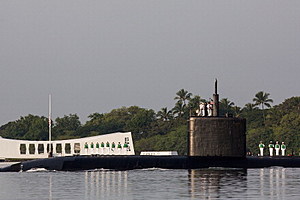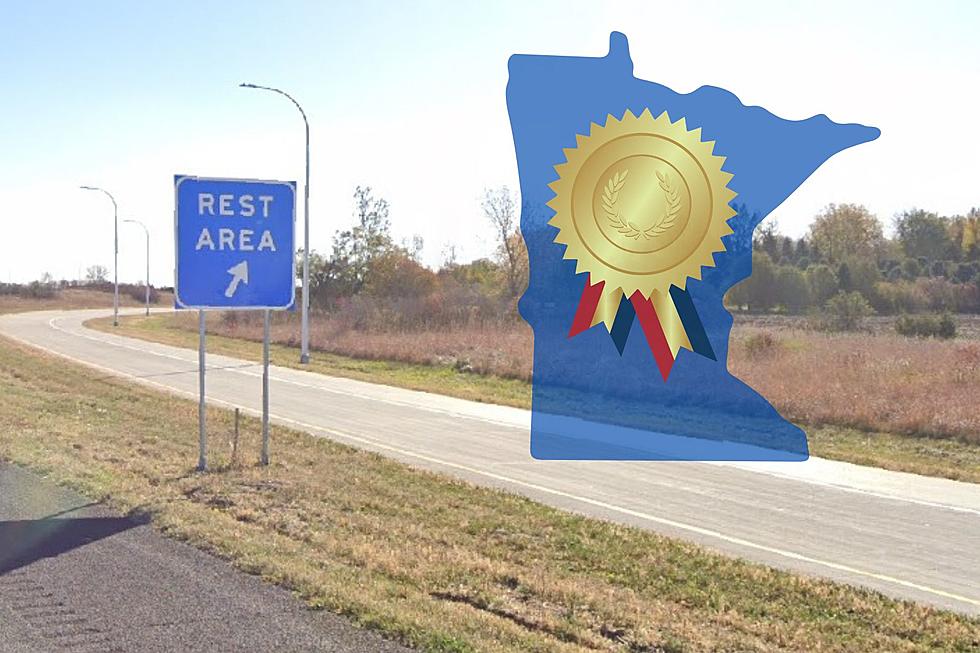
Today Is Pearl Harbor Remembrance Day
I can't imagine what it was like to be a sailor in 1941 in Hawaii at Pearl Harbor. There have been plenty of movies about the attack, too. It was the attack that brought us into World War II. Here are some facts about what all went down, from History.com.
The attack on Pearl Harbor occurred on December 7, 1941.
The Japanese attacked the United States without warning.
The attack lasted 110 minutes, from 7:55 a.m. until 9:45 a.m.
A total of 2,335 U.S. servicemen were killed and 1,143 were wounded. Sixty-eight civilians were also killed and 35 were wounded.
The Japanese lost 65 men, with an additional soldier being captured.
Pearl Harbor is on the south side of the Hawaiian island of Oahu and is the home to a U.S. naval base.
The attack on Pearl Harbor brought the United States into World War II.
Japan and the Attack on Pearl Harbor
Plans for a surprise attack against the United States were begun as early as January of 1941.
Although it was Japanese Admiral Isoroku Yamamoto who initiated the plans for the attack against Pearl Harbor, Commander Minoru Genda was the plan's chief architect.
The Japanese used the codename "Operation Hawaii" for the attack on Pearl Harbor. This later changed to "Operation Z."
The Japanese specifically chose to attack on a Sunday because they believed Americans would be more relaxed and thus less alert on a weekend.
The Japanese attack force stationed itself approximately 230 miles north of the Hawaiian island of Oahu.
The Japanese launched their airplanes in two waves, approximately 45 minutes apart.
The first wave of Japanese planes struck Pearl Harbor at 7:55 a.m. The second wave reached Pearl Harbor around 8:40 a.m.
When Japanese Commander Mitsuo Fuchida called out, "Tora! Tora! Tora!" ("Tiger! Tiger! Tiger!") upon flying over Pearl Harbor, it was a message to the entire Japanese navy telling them they had caught the Americans totally by surprise.
Facts About the Battleships
The main target of the Japanese was to be the aircraft carriers; however, since all three U.S. aircraft carriers were out to sea, the Japanese focused on the battleships.
There were eight battleships at Pearl Harbor that day, which included all the battleships of the U.S. Pacific fleet except for one (the Colorado).
Seven of the U.S. battleships were lined up in "Battleship Row."
During the attack, the Nevada left its berth in Battleship Row and tried to make it to the harbor entrance. After being repeatedly attacked on its way, the Nevada beached itself.
The Arizona exploded when a bomb breached its forward magazine (i.e. the ammunition room). Approximately 1,100 U.S. servicemen died on board.
After being torpedoed, the Oklahoma listed so badly that it turned upside down.
To aid their airplanes, the Japanese sent in five midget subs to help target the battleships. The Americans sunk four of the midget subs and captured the fifth.
All eight U.S. battleships were either sunk or damaged during the attack. Amazingly, all but two (the Arizona and the Oklahoma) were eventually able to return to active duty.
Facts About the Airfields at Pearl Harbor
Many U.S. servicemen were either still in their pajamas or eating breakfast in the mess halls when the attack on Pearl Harbor began.
U.S. servicemen identified the invading planes as Japanese because of the "meatballs," what they called the large, red circle (the Rising Sun) on the side of Japanese planes.
The Japanese hoped to destroy U.S. planes on the ground in order to minimize any counter-attack against them over Pearl Harbor or against the Japanese attack force.
The Japanese struck the airfields at Hickam Field, Wheeler Field, Bellows Field, Ewa Field, Schoefield Barracks, and Kaneohe Naval Air Station.
Many of the U.S. airplanes were lined up outside, along the airstrips, wingtip to wingtip, in order to avoid sabotage. Unfortunately, that made them easy targets for the Japanese attackers.
Unable to get more than a handful of planes in the air, individual U.S. servicemen tried to shoot down the Japanese planes from the ground.
After the Attack on Pearl Harbor Ended
When the Japanese left Pearl Harbor at 9:45 a.m., the Americans didn't realize the attack was actually over. They expected another wave to hit.
The day following the attack on Pearl Harbor, U.S. President Franklin D. Roosevelt declared that December 7, 1941 would be "a date that will live in infamy."
The United States declared war on Japan on December 8, 1941, the day following the attack on Pearl Harbor.
"Remember Pearl Harbor!" became a rallying cry for the U.S. during World War II.



